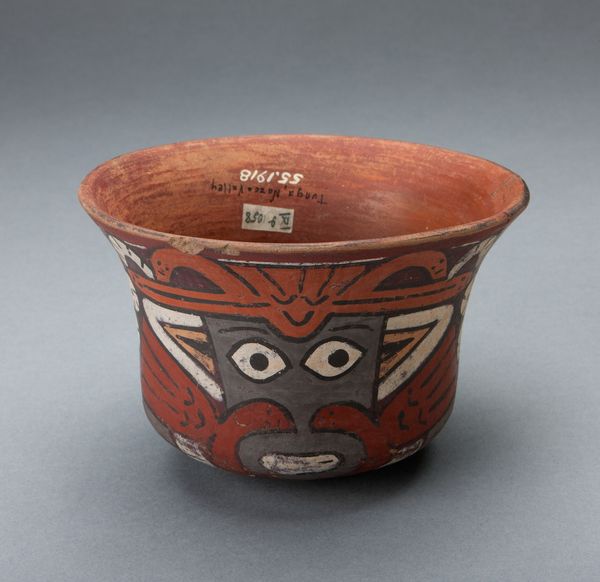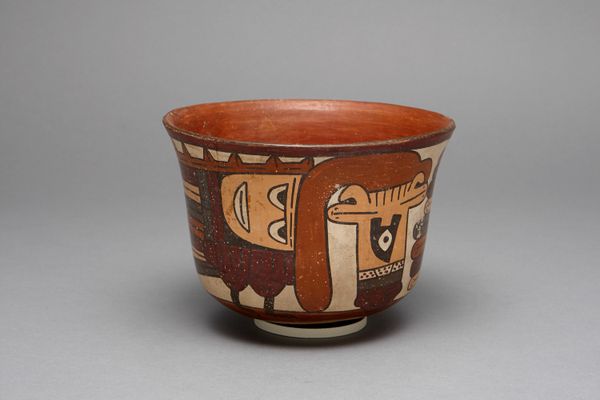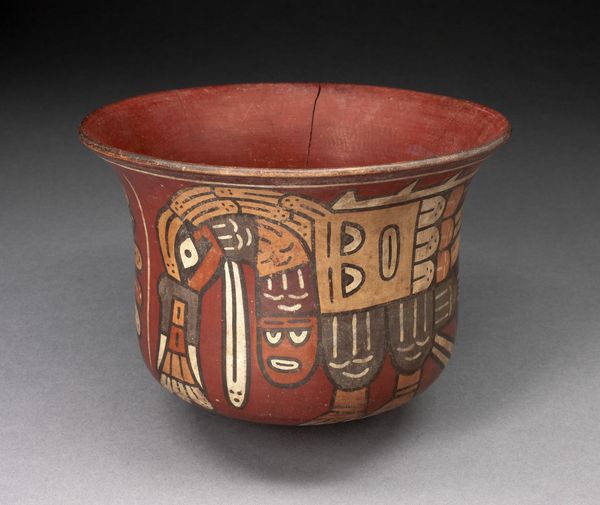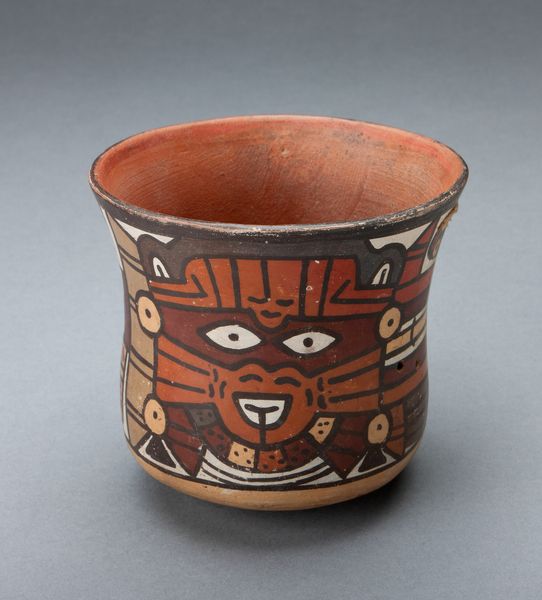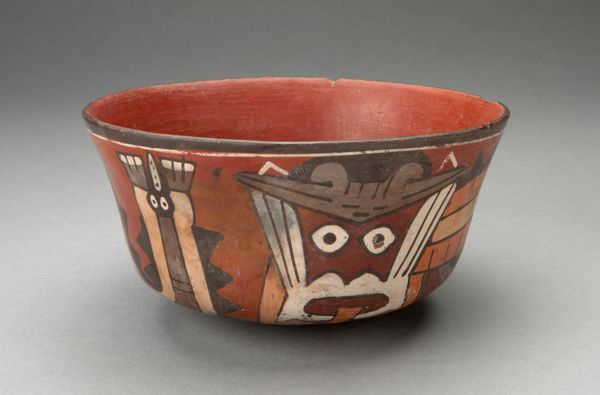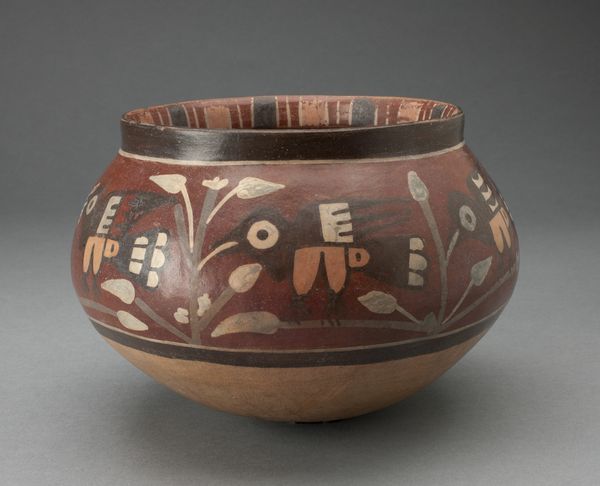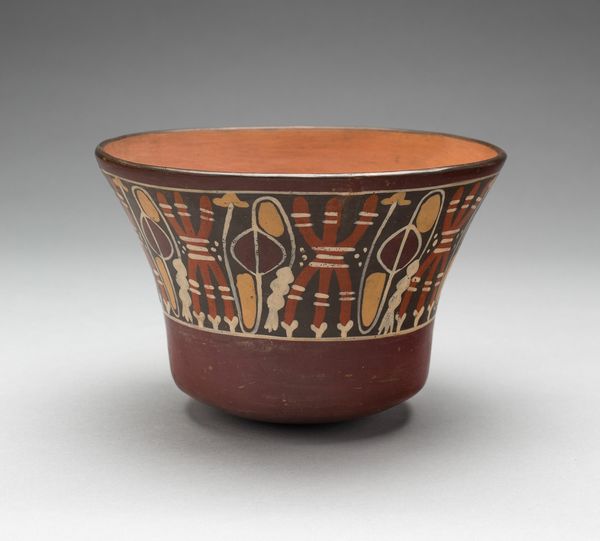
ceramic, terracotta
#
pottery
#
ceramic
#
figuration
#
geometric
#
ceramic
#
terracotta
#
indigenous-americas
Dimensions: 8.3 × 12.7 cm (3 1/4 × 5 in.)
Copyright: Public Domain
This bowl, now at the Art Institute of Chicago, was made by the Nazca people of ancient Peru, using paint on ceramic. The bowl presents abstracted images of insects, thought to be spiders. The Nazca culture flourished in a desert environment between 100 BCE and 800 CE. The visual culture of this period is striking and quite sophisticated. The geography of the area is important to understanding why. The Nazca were famous for creating enormous geoglyphs in the desert – images so large they are best viewed from above. But, like this bowl, much of Nazca art was of a smaller scale. Pottery like this bowl was both a functional object and a canvas for artistic expression. The decoration suggests that the natural world, especially insects, was of great symbolic importance. Historians examine the iconography of Nazca pottery to understand better the beliefs and social structures of the time. Looking at examples in museum collections, combined with archaeological research, we can learn more about the place of art in ancient societies.
Comments
No comments
Be the first to comment and join the conversation on the ultimate creative platform.
